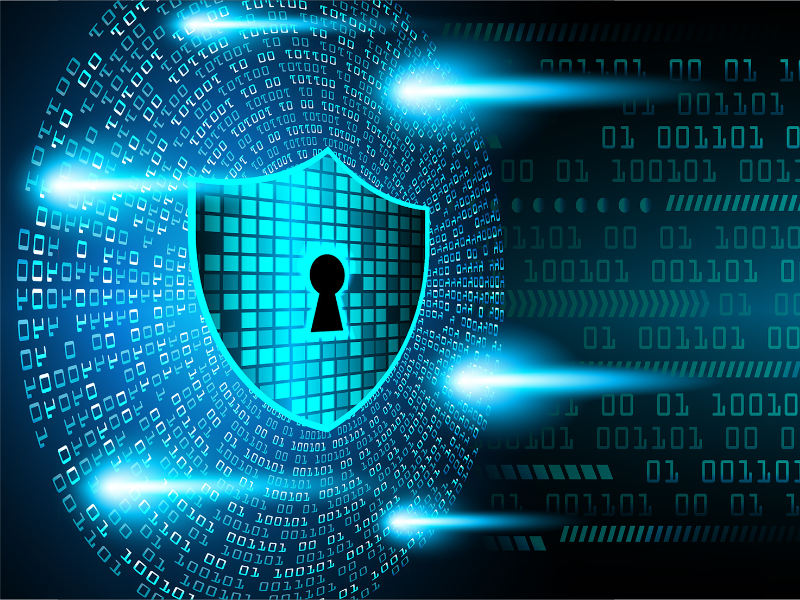Verifying who we are has never been more important. As we interact with businesses, services, and systems online, ensuring our identities are secure is critical to protecting sensitive information. Identity proofing plays a vital role in confirming that individuals are who they claim to be, helping to prevent fraud and build trust in digital interactions.
Key Takeaways
- Identity proofing is critical for digital security: It verifies individuals’ identities, prevents fraud, and builds trust in online interactions.
- Key identity proofing methods include biometrics, document verification, and two-factor authentication: These techniques enhance accuracy and reduce vulnerabilities in digital ecosystems.
- Fraud prevention and compliance are major benefits: Identity proofing helps mitigate cyber threats, reduce unauthorized access, and meet regulatory standards like KYC and AML.
- Challenges include balancing security with user experience: Privacy concerns, accessibility issues, and complex processes require innovative solutions for inclusivity and efficiency.
- Emerging technologies are reshaping identity proofing: AI, decentralized identity systems, and enhanced biometrics are improving security, adaptability, and user control over personal data.
We’ve all seen how quickly cyber threats evolve, making robust identity verification methods essential for both individuals and organizations. From opening bank accounts to accessing healthcare services, identity proofing safeguards our personal data while enabling seamless access to the services we rely on. It’s not just about security—it’s about creating confidence in a connected world.
What Is Identity Proofing?
Identity proofing is the process of verifying that an individual is who they claim to be. It ensures that the provided identity information corresponds to a real, unique person and not a fraudulent or fabricated entity. This process plays a critical role in digital interactions where physical presence is absent.
We generally categorize identity proofing into three main stages: data collection, validation, and verification. During data collection, personal information such as name, date of birth, and government-issued ID numbers is gathered. Validation confirms that the data provided is authentic, often using documents, databases, or biometric checks. Verification then compares this data against trusted sources to establish the individual’s identity.
Many industries rely on identity proofing. Financial institutions, for example, use it to comply with Know Your Customer (KYC) regulations, while healthcare providers implement it to safeguard patient data. Additionally, e-commerce and remote onboarding processes incorporate identity proofing to prevent fraud and maintain security.
Modern identity proofing methods include technologies like AI-based biometric recognition, digital identity wallets, and real-time document verification. These tools enhance accuracy and minimize manual errors, making identity proofing both efficient and scalable.
Importance Of Identity Proofing
Identity proofing plays a pivotal role in securing digital ecosystems and protecting both users and organizations. It forms the foundation for trust and security in an increasingly interconnected world.
Preventing Fraud And Cybersecurity Risks
Robust identity proofing is essential to mitigate fraud and combat cybersecurity threats. Cybercriminals exploit weak identity verification processes to commit identity theft, data breaches, and financial fraud. According to the Federal Trade Commission (FTC), identity theft accounted for 1.4 million fraud reports in 2022. High-assurance methods like AI-driven facial recognition, multi-factor authentication, and real-time data validation help prevent unauthorized access and safeguard sensitive data. By verifying user identities at the outset, businesses reduce vulnerabilities that malicious actors can exploit.
Building Trust For Digital Transactions
Reliable identity proofing fosters confidence in digital interactions by ensuring that only legitimate individuals access services. In e-commerce, secure identity verification prevents unauthorized purchases. Financial institutions rely on stringent proofing measures to comply with anti-money laundering (AML) and know-your-customer (KYC) regulations. Technologies such as blockchain-based ID systems and biometric authentication enhance transparency and reduce the risk of fraud. Users are more likely to engage with platforms that prioritize identity security, strengthening trust and enabling smoother transactions.
Methods Of Identity Proofing
Identity proofing methods are designed to verify individuals’ identities securely and accurately. These methods help mitigate fraud risks and protect sensitive data across digital and physical platforms.
Knowledge-Based Verification
Knowledge-based verification (KBV) uses personal knowledge to confirm an individual’s identity. This method typically requires answering security questions based on details only the individual should know, such as past addresses or loan amounts. While KBV is cost-effective and straightforward to implement, its reliance on personal data limits effectiveness, as hackers can access such information through data breaches.
Document Verification
Document verification involves validating government-issued IDs like passports, driver’s licenses, or national identity cards. Users typically upload images of their documents which are then checked for authenticity using optical character recognition (OCR) and advanced algorithms to detect forgery or tampering. Real-time verification systems improve accuracy and streamline the process by cross-referencing the document data with official databases.
Biometric Verification
Biometric verification uses unique physical characteristics such as facial features, fingerprints, or iris patterns to confirm identity. Artificial intelligence enhances efficiency by comparing biometric data against pre-existing records in real time. This method is highly secure since biometric traits are nearly impossible to replicate, making it suitable for environments requiring high-assurance verification like financial institutions.
Two-Factor Authentication
Two-factor authentication (2FA) requires users to provide two separate verification elements, typically a password and a one-time code sent to their mobile device. This layered approach improves security by ensuring access is granted only when both factors are verified. Organizations frequently use 2FA to protect sensitive accounts and comply with regulatory standards for secure user authentication.

Challenges In Identity Proofing
Identity proofing presents several challenges that complicate its implementation in digital environments. Addressing these issues is essential for ensuring security while maintaining user trust and compliance with regulations.
Privacy Concerns
Maintaining user privacy during identity proofing is a significant challenge. Collecting personal data, such as biometric information or government ID images, can expose users to privacy risks if systems lack adequate safeguards. Data breaches can lead to theft or misuse of sensitive information, eroding user trust. Complying with data protection laws, like GDPR or CCPA, requires implementing strict privacy measures throughout the identity proofing process.
Accessibility Issues
Ensuring inclusivity in identity proofing processes can be difficult. Not all users have access to advanced technologies or required identity documents, such as smartphones or government IDs. This disproportionately affects underrepresented groups like individuals in remote areas or those with disabilities. Designing identity proofing methods that account for diverse user needs while maintaining high security standards remains a critical challenge.
Balancing Security And User Experience
Achieving a balance between robust security and seamless user experiences is a complex task. While multi-factor authentication or biometric systems enhance security, they can also create friction for users, leading to frustration and potential drop-offs. Simplifying the process without compromising security requires innovative solutions, such as combining AI-driven verification with intuitive design to streamline workflows and retain user satisfaction.
Future Trends In Identity Proofing
Emerging technologies continue to redefine identity proofing, enhancing security and user experience. Innovations like artificial intelligence, decentralization, and biometric advancements are shaping this evolving landscape.
AI And Machine Learning Applications
AI and machine learning are transforming identity proofing by improving fraud detection and decision-making accuracy. Algorithms analyze substantial data sets to detect anomalies, such as mismatched identity records or fraudulent document patterns. For instance, AI-driven facial recognition systems compare uploaded photos with official ID images, confirming identity within seconds. Machine learning adapts to new fraud methods, making verification processes more robust against evolving threats.
Decentralized Identity Systems
Decentralized identity systems empower individuals with greater control over their personal information. Blockchain technology enables secure, tamper-proof storage of identity credentials, eliminating reliance on centralized databases prone to breaches. With self-sovereign identity (SSI) frameworks, users can selectively share information, such as age or citizenship, without exposing unnecessary data. This reduces privacy risks and aligns with global compliance standards like GDPR.
Enhanced Biometrics
Biometric advancements are enhancing identity proofing by improving accuracy and reliability. Technologies now utilize multimodal biometrics, combining data like fingerprints, voiceprints, and iris scans for higher verification precision. Behavioral biometrics, which analyze patterns such as typing speed or mouse movement, add an extra security layer. For example, voice recognition integrated with AI delivers seamless yet secure authentication for remote services. Enhanced biometrics minimize bypass risks, paving the way for more secure and user-friendly systems.
Conclusion
Identity proofing is a cornerstone of digital security and trust in our increasingly connected world. As technology evolves, adopting advanced verification methods is essential to stay ahead of cyber threats while ensuring user privacy and accessibility. By leveraging innovations like AI, biometrics, and decentralized systems, we can create secure and seamless digital experiences that benefit both individuals and organizations. Prioritizing robust identity proofing not only protects sensitive data but also fosters confidence in every online interaction.
Frequently Asked Questions
What is identity proofing?
Identity proofing is the process of verifying that an individual is who they claim to be. It involves collecting, validating, and verifying personal information to ensure the person’s identity, especially in digital interactions where physical presence isn’t possible.
Why is identity proofing important?
Identity proofing is crucial to prevent fraud, protect sensitive information, and ensure secure digital interactions. It fosters trust by enabling only legitimate users to access services while complying with regulations like AML and KYC.
What industries rely on identity proofing?
Industries like banking, healthcare, e-commerce, and finance rely on identity proofing to secure transactions, comply with regulations, and protect sensitive user data.
What are the main stages of identity proofing?
The three main stages of identity proofing are data collection, validation, and verification. These steps ensure the accuracy and legitimacy of the individual’s identity.
What are some modern methods of identity proofing?
Modern methods include AI-based biometric recognition, real-time document verification, multi-factor authentication (2FA), blockchain-based identity systems, and behavioral biometrics.
How does identity proofing help prevent fraud?
By employing advanced technologies like biometrics, AI, and multi-factor authentication, identity proofing detects and blocks unauthorized access, reducing the risk of identity theft and fraudulent activities.
What are some challenges in identity proofing?
Challenges include balancing robust security with user experience, ensuring privacy during data collection, and improving accessibility for underrepresented groups lacking necessary documents or technology.
What role does AI play in identity proofing?
AI enhances identity proofing by improving fraud detection, analyzing large data sets for anomalies, and increasing accuracy in decision-making, making the process faster and more secure.
What is decentralized identity, and how does it help?
Decentralized identity uses blockchain technology to give individuals control over their personal data, reducing privacy risks and ensuring transparent, secure identity management.
How does biometric verification work in identity proofing?
Biometric verification uses unique physical or behavioral traits, such as fingerprints or facial recognition, to confirm an individual’s identity, ensuring secure and accurate verification.
Why is privacy important during identity proofing?
Protecting user privacy ensures that collected personal data isn’t misused or exposed to breaches, mitigating risks like identity theft and maintaining user trust.
What is the future of identity proofing?
The future includes advancements in AI, decentralized ID systems, and enhanced biometrics, which will improve security, user experience, and fraud prevention in digital ecosystems.
